
How climate change risks the lives of indigenous communities
The Wari people have found themselves alone in the face of an environmental disaster. Droughts and extreme cold have destroyed their agriculture and access to clean water. For Wellcome Photography Prize, Florence Goupil travelled to the Cojup valley, Peru, to document how climate change is affecting their way of life.

Florence Goupil / Wellcome Photography Prize 2021
This story includes an image that some readers may find offensive or disturbing
“I am the man who calls the rain. When I give salt to the lake, the rain comes. The lake sends us rain to the village so that the crops and plants will grow.”
Nemesio Santiago, a Wari elder, carries out a ritual to call the rain in front of the Llaca lake. In exchange for the rain, Nemesio gives solid pieces of salt that he throws with a rope slingshot. For ten years Nemesio stopped doing the ritual because the people of the Llupa community lost hope that the rains would return.
Drought
The indigenous Wari people of the Cojup valley, located at the foot of the snow-capped mountains of Huaraz, Peru, are facing an environmental disaster. First, there was a massive thaw. Now, lack of rain and off-season extreme cold have led to long droughts that have damaged agricultural cycles and endangered their food sovereignty.
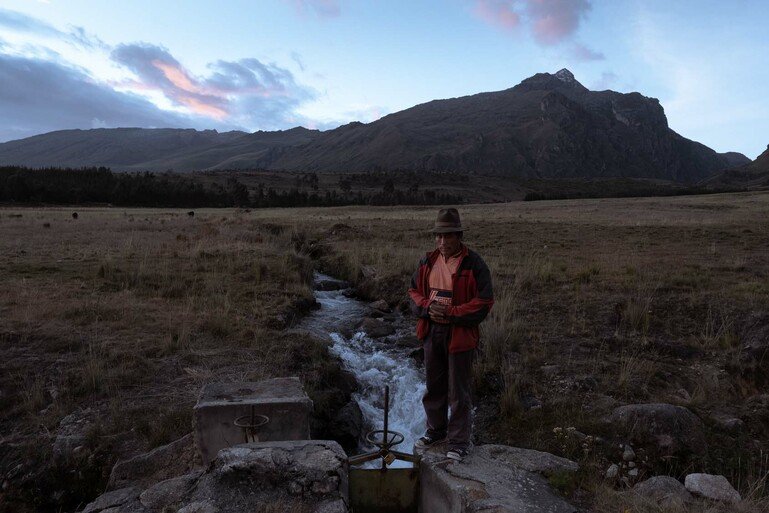
Florence Goupil / Wellcome Photography Prize 2021
“We are rationing water because of the shortage”, Jose Pariamache is chief of the ALA (Local Water Authority) in Llupa and is in charge of water for irrigating the fields. He speaks of the rain with sadness, because the seasons have changed and the local people can no longer work the land as before.
“Water is like gold for us.”
“We use our canal in this time of drought to irrigate our fields and nourish our animals. But now the swamps are disappearing,” said Jose.
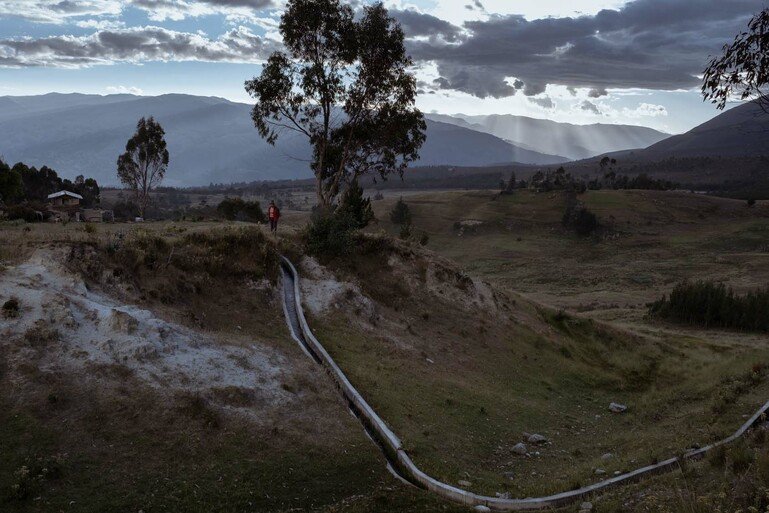
Florence Goupil / Wellcome Photography Prize 2021
Contaminated water
And while there are rivers nearby, many have been contaminated. As the snow melts, heavy metals are revealed in the stones that go directly to the river.
In one image, Julio Luciano, a Wari farmer, works his dry land for the next potato planting. Although he is close to the Qoyllur river, he cannot use its water for irrigation because it is contaminated with heavy metals.
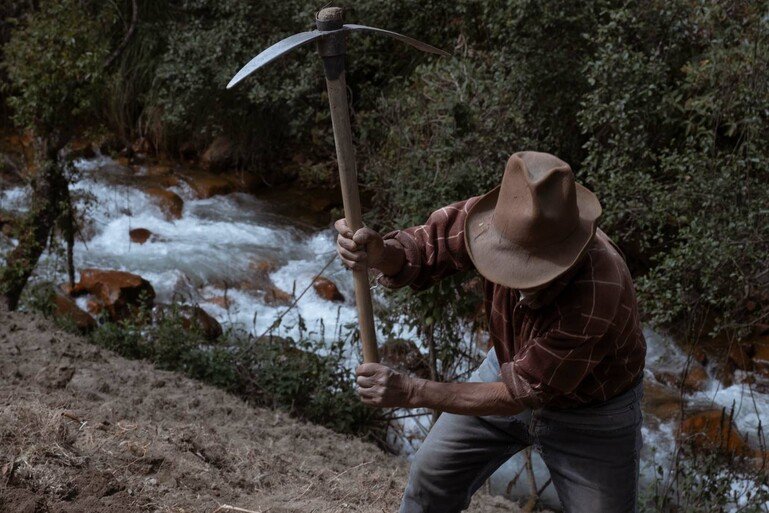
Florence Goupil / Wellcome Photography Prize 2021
Food insecurity
Without rainfall, and access to clean water, their food sovereignty is in danger.
“When there is no more rain, there will be no more potatoes. What will we come to? How will the children be?” In the image below, Lidia Loli, a Wari woman, sits in front of her recent potato harvest, which is to provide the principal meals for her family of six for the whole year.

Florence Goupil
As well as using their plants medicinally, the Wari of the Llupa community grow foods such as beans and ulluco, a tuber rich in vitamin C. But due to the lack of rain and poor irrigation, the land is drying up and harvests are becoming increasingly difficult and scarce. This is having an impact on the health of the community.
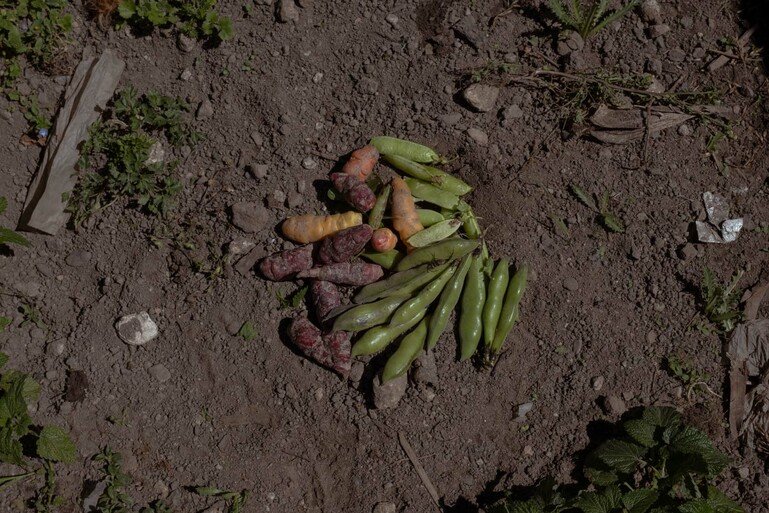
Florence Goupil / Wellcome Photography Prize 2021
There was a high rate of undernutrition in the Ancash region. According to the IPE (National Institute of Economics), it is estimated that 38% of children under 3 years of age in the Ancash region had anaemia in 2020. In 2019, that figure was 28%. Anaemia is a result of the deteriorating crop-growing conditions in the region caused by climate change.
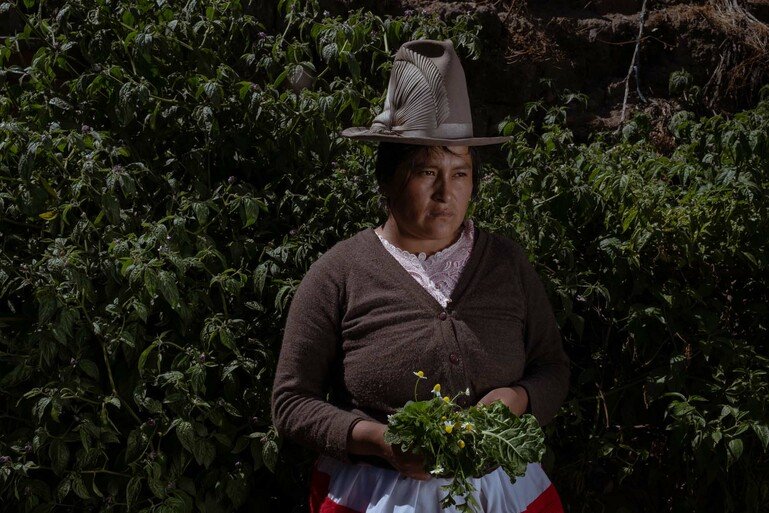
Florence Goupil / Wellcome Photography Prize 2021
Margarita Jamanca, a farmer, posed for a portrait in her medicinal herb garden. Her youngest son suffers from anaemia, but she does not trust the food supplements from the Ministry of Health. Instead, Margarita uses the food and herbs she grows to help him.
But climate change is making it harder for the community to sustain their way of life, “The climate makes you sad, our seedlings don’t grow as they used to. Now we have to make them grow with fertilisers. All kinds of diseases attack them.”
“The government give us processed, canned foods. It’s not very effective for us. Instead we collect the lamb’s blood to give to children and adults with anaemia,” says Yony Rosales, a Wari man. The Wari seek to restore children’s health by sacrificing sheep to use their blood. In the image below Margarita Jamanca collects the animal’s blood before boiling it with herbs and giving it to her children to treat anaemia.

Florence Goupil / Wellcome Photography Prize 2021
A land under threat
The changes to the climate of the area have not just damaged agriculture. Global warming has also affected the climate stability of the area. The severity is such that the entire snow-capped mountain could now collapse.
Scientists foresee an avalanche of 17 million cubic meters of water and mud, which could wipe out their water reserves and bury the entire population.
The modification of their territory and the children’s undernutrition threatens them with disappearance, yet the Wari farmers do not want to leave their territory.
The Cojup Valley is their ancestral land and they have nowhere else to go. Wari people have found themselves alone in the face of an environmental and human-made disaster.
“This year’s maize and potato harvest will be little or none,” says Victor Vargas, a Wari elder. “If there is no food, what are we going to do? Where are we going to go? Somewhere else? There won’t be space for us. No matter what happens we will die here.”

